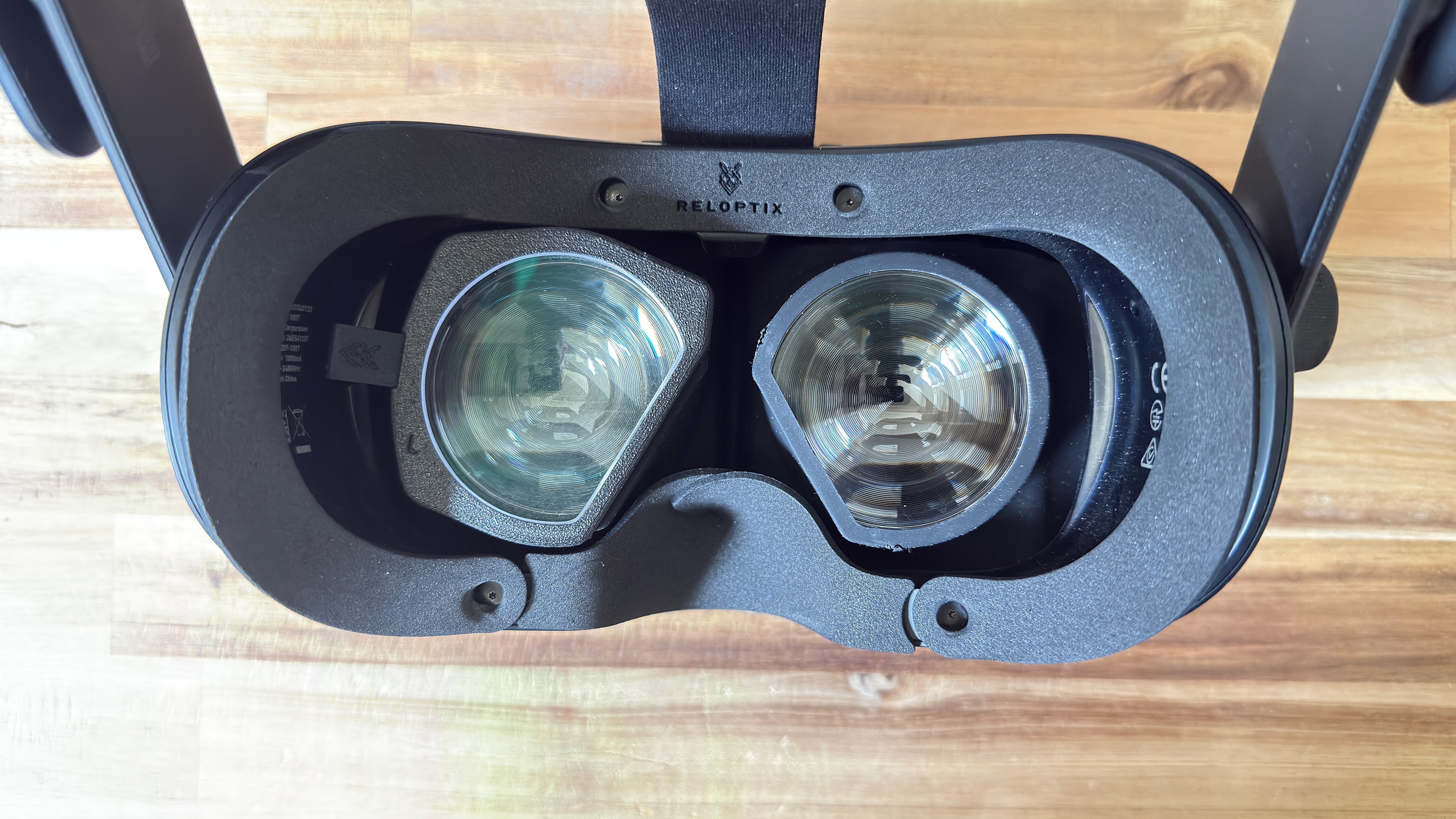The evolution of technology follows a consistent pattern: once something exists, engineers and designers work to make it smaller, lighter, and more efficient. Cassette players became Walkmans, Walkmans became iPods, and iPods became iPhones. This pursuit of miniaturization is almost instinctive.
Today’s compact headsets, like the Pimax Crystal Light, showcase how far the industry has come in portability and streamlined design. Smaller, lighter headsets reduce fatigue, look sleeker, and promise to make VR more appealing to a broader audience.
But every step toward minimalism involves trade-offs. For the millions of VR users who wear glasses, that can mean lenses sitting uncomfortably close, the disappearance of IPD knobs, and less or no room for prescription inserts. On paper, these headsets look like the future. In practice, they can leave a large portion of the VR community behind.
Why Smaller Headsets Look This Way
There are solid reasons manufacturers pursue smaller designs:
-
Portability and Comfort: Reduced size and weight make VR more appealing for casual use and travel.
-
Sleek Design: Minimalist aesthetics help headsets stand out in a crowded consumer market.
-
Cost and Complexity: IPD knobs, distance sliders, or extra housing space for glasses add parts, engineering time, and production expense.
On top of that, shrinking a headset while maintaining high-resolution optics is an enormous challenge. Every millimeter counts. Too much spacing can throw off lens geometry, introduce distortion, or add weight that undermines portability.
These are real constraints—and understanding them helps open the conversation about practical design solutions. A millimeter saved for portability doesn’t have to mean a millimeter lost for accessibility.
Glasses-Wearers’ VR Experience
For glasses users, the effects of compact design show up immediately. One Redditor describing the Pimax Crystal Light wrote:
“I couldn’t even fit my frames in without smushing my nose.” (source)
It’s not just about physical fit. Without IPD adjustment or room for inserts, vision clarity can suffer. Blurred visuals, eye strain, and shortened play sessions are common complaints. Even users who turn to contact lenses report discomfort—dryness, irritation, or inability to wear them for long sessions.
For a technology that depends on immersion, even minor visual or comfort issues can break the experience. These frustrations aren’t abstract—they’re clear signals that design trade-offs directly affect usability.
And as we note in Why You Still Need Glasses or Prescription Lenses with a VR Headset, contact lenses aren’t a universal fix. Inserts meet users where they are, offering clarity without compromise.
The Role of Distance and IPD Adjustments
Two technical factors make a big difference:
-
Interpupillary Distance (IPD) Adjustment: Aligns headset lenses with the user’s pupils. Physical knobs, like those on the Valve Index, allow precise tuning.
-
Lens-to-Eye Distance: Determines whether glasses or lens inserts can fit comfortably without pressing against the face.
Many newer small headsets have reduced or removed these adjustments. That decision streamlines design and reduces cost—but at the expense of visual clarity and accessibility.
As we’ve shown in Why Adjustable Glasses Fall Short in VR, eyewear alone can’t replicate the precision alignment VR optics require. Properly fitted prescription inserts remain the most reliable solution.
A Market Opportunity in Disguise
Glasses-wearers make up a significant portion of VR users, and forums are filled with repeated concerns:
-
Frames that don’t fit inside small headsets
-
Pressure points causing pain during long sessions
-
Requests for alternatives to contact lenses
Overlooking these needs risks alienating a substantial audience—one that is already enthusiastic about VR but forced to make do with workarounds.
On the flip side, addressing these needs offers a competitive edge. A headset that combines portability with inclusivity appeals to both mainstream buyers and passionate enthusiasts.
Recommendations for Manufacturers
Designers and engineers already juggle enormous challenges: optics, weight distribution, heat management, cost, and consumer appeal. Adding glasses compatibility into that mix can feel like one more complication—but the payoff is significant. A few steps can help:
-
Early User Testing: Involving glasses-wearers in QA surfaces problems before they become user complaints.
-
Data-Driven Decisions: Tracking how comfort and visual clarity affect play session length offers insights beyond specs.
-
Partnerships with Solution Providers: Working with companies like Reloptix enables manufacturers to offer tested, ready-to-integrate options.
-
Balanced Trade-Offs: Small design tweaks can improve inclusivity without undermining portability or aesthetics.
These steps don’t just address complaints—they expand the headset’s reach, improve user satisfaction, and strengthen brand reputation.
Inclusivity as a Competitive Advantage
Small VR headsets represent some of the most impressive innovation in consumer tech today. But inclusivity shouldn’t be left behind in the race for sleekness. By considering the realities of glasses-wearers, exploring modular solutions, and partnering with companies focused on optical inserts, manufacturers can deliver headsets that are both cutting-edge and accessible.
The result isn’t compromise. It’s a headset that delivers on design goals while opening VR to the widest possible audience—a win for both manufacturers and the millions of glasses-wearing gamers eager to step into virtual worlds.



Share:
Why Adjustable Glasses Fall Short in VR